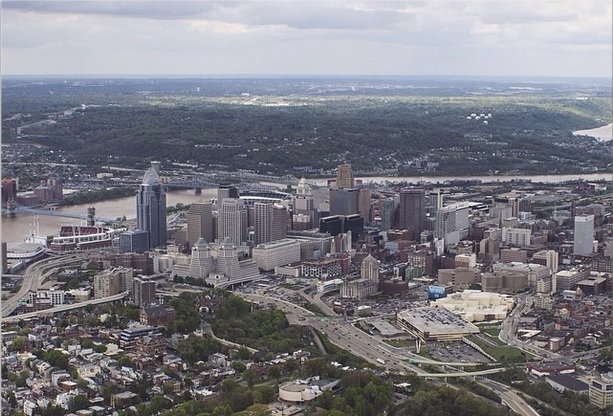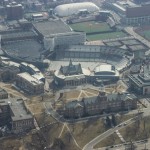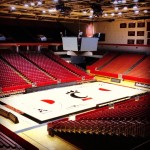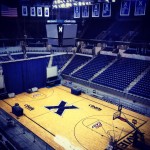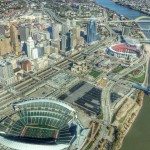The Cincinnati region has an arena problem that is two-fold. The first part of the problem is that there is no stand-out venue that offers both the capacity and modern amenities to attract large-scale events. The second is that the region has far too many venues competing with one another.
Within a one-hour drive from Fountain Square there are eight arenas with a capacity of more than 9,000 people for their primary tenants. Of these, only three have been built or undergone major renovations since the year 2000. The lone major project currently on the books is the $310 million renovation and rebuild of Rupp Arena in Lexington, which also happens to be the furthest away of the eight venues mentioned.
- Rupp Arena (23,500): Built in 1975 with minor renovations in 2001. Primary tenant is University of Kentucky athletics. Major renovation and rebuild planned for completion in 2017.
- U.S. Bank Arena (17,566): Built in 1975 with a major renovation in 1997 and subsequent minor renovations. Primary tenant is the minor league hockey Cincinnati Cyclones team.
- UD Arena (13,409): Built in 1969 with major renovations in 2002 and minor renovations again in 2010. Primary tenant is University of Dayton athletics.
- Fifth Third Arena (13,176): Built in 1989 with several minor renovations since. Primary tenant is University of Cincinnati athletics.
- Cintas Center (10,250): Built in 2000. Primary tenant is Xavier University athletics.
- Cincinnati Gardens (10,208): Built in 1949 with no major renovations since its opening. Primary tenant is the amateur women’s roller derby Cincinnati Rollergirls team.
- Bank of Kentucky Center (9,400): Built in 2008. Primary tenant is Northern Kentucky University athletics.
- Millett Hall (9,200): Built in 1968 with no major renovations since its opening. Primary tenant is Miami University athletics (sans hockey).
Recent talks closer to the core of our region have revolved around either embarking on a major renovation of Fifth Third Arena, or building a new one altogether; and performing major renovations on U.S. Bank Arena. The problem with these two approaches, however, fails to address the two core problems with the region’s plethora of arenas.
Any discussion on this topic should be focused on creating a stand-out venue that is both large enough and offers the modern amenities needed to attract major events, while also decluttering the regional arena landscape.
To that end, UrbanCincy recommends building a brand new arena adjacent to the Horseshoe Casino at Broadway Commons that would become the new home for the Cincinnati Cyclones, Cincinnati Rollergirls and University of Cincinnati Men’s Basketball. This venue would also accommodate the existing events held at U.S. Bank Arena and should be built in a way that is conducive for casino operators to program additional events, such as boxing, at the venue.
As part of this plan, U.S. Bank Arena and the Cincinnati Gardens should be torn down, and Fifth Third Arena used as the multipurpose facility it was originally intended to be.
This location makes perfect sense with immediate access to the center city’s hotels and convention facilities, casino, streetcar system, highways and abundant parking. Such a plan would also allow for the current U.S. Bank Arena site to be redeveloped with additional housing and shops akin to what is being developed at The Banks.
The land left over at the Cincinnati Gardens site in Bond Hill could then be repackaged, with surrounding land, to be developed as part of community-driven master plan.
As is often the case, funding is one of the primary hurdles preventing any of this from getting done. In this particular plan, each of the partners (University of Cincinnati, City of Cincinnati, Hamilton County, Horseshoe Casino) could contribute to the capital costs. Furthermore, value capture tools could be used for the U.S. Bank Arena and Cincinnati Gardens properties to help offset costs even more.
The last thing our region needs is another tax to pay for a sports or entertainment complex. Those scarce public resources should be reserved for more pressing things like improving our region’s transit network.
Our region’s political and business leaders need to think holistically when it comes to this challenge. Moving forward in a panicked and rushed fashion will get us an end result that does not solve the problems before us, and ultimately squanders public dollars.
Let’s build ourselves a modern arena venue that can attract top-level events, but do so without placing the burden on the taxpayers. Let’s also do so in a way that rids the region of some of its excess number of existing arenas, and frees up land to be redeveloped in a more productive manner for our neighborhoods.
There is a wealth of talent and C-Level executives in this region. Let’s get creative and start thinking beyond the sales tax. Let’s get this done.
